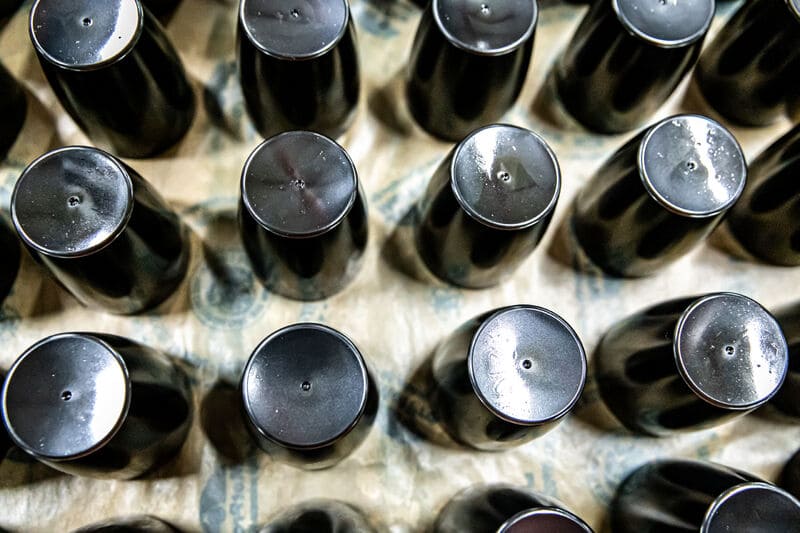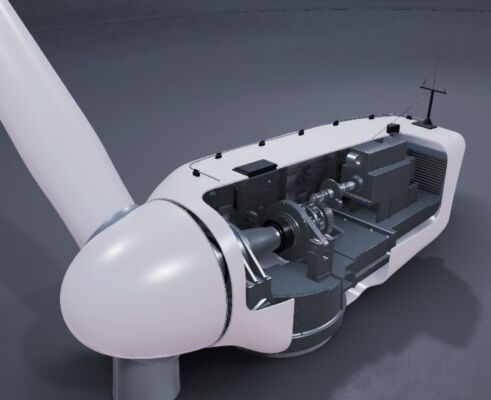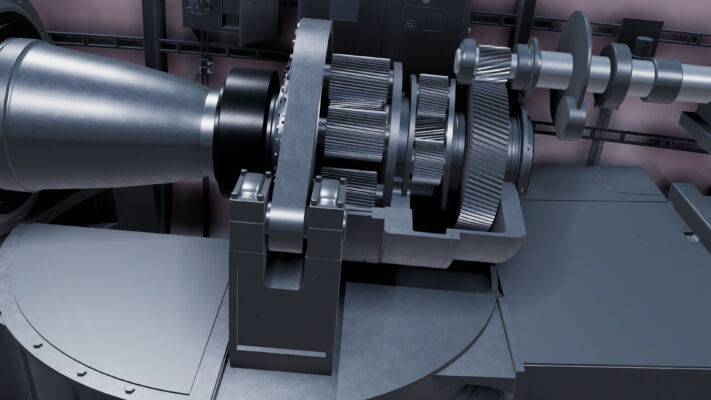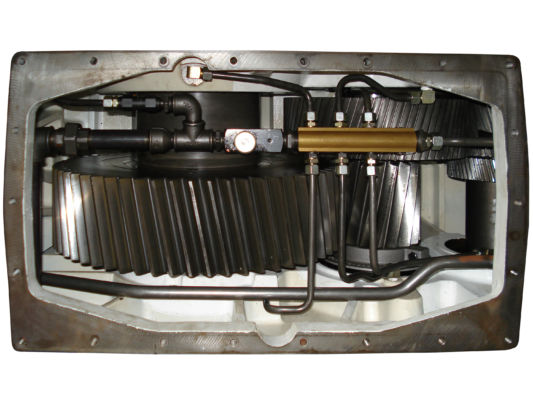Black oxide treatment, often referred to as blackening, is a chemical process that produces a black iron oxide layer (Fe3O4) on the surface of various metals, including steel, stainless steel, and copper. The process involves immersing the metal parts in a hot bath of sodium hydroxide, nitrates, and nitrites. The black finish is the result of a chemical reaction that forms on the surface of the metal. After the oxidation process, the parts are rinsed and may be treated with additional rust-preventative sealants or oils.
Why black oxide?
There are several reasons why black oxide treatment can be beneficial for turbine bearings:
- Anti-corrosion properties – the layer acts as a barrier against environmental factors, reducing the risk of corrosion and the potential negative impact of oil additives.
- Reduced friction – after the run-in period, the coating can minimize friction between moving parts, leading to smoother operation and a decreased risk of smearing or adhesive wear.
- Improved lubrication – the porous nature of the coating retains lubricants better, which can improve the lubrication of the bearing surfaces.
- Hydrogen barrier – the finish serves as a shield against hydrogen atom intrusion. When hydrogen atoms permeate the bearing steel, they induce brittleness and elevate the risk of cracks and premature failures.
- No dimensional change in production – unlike other coatings that add thickness, black oxide is a conversion layer that does not alter the dimensions of the treated parts, ensuring that they fit and function as intended.
Field experience spanning over 15 years in the area of wind turbine gearboxes has demonstrated that black oxidizing is the most cost-effective method for improving durability and preventing early bearing failures due to white-etching cracks (WEC), as well as slip and smearing.
SKF’s innovative approach
SKF employs a unique black oxide coating method involving up to 15 immersion stages carried out in an alkaline aqueous salt solution at precise temperatures. Currently, this technique can be applied to bearings with a maximum diameter of 2.2 m and a weight of up to 1,000 kg per component, encompassing the prevalent range of bearing sizes employed in wind turbine gearboxes. The process results in a black surface layer about 1-2 μm thick.
SKF manufactures black oxidized versions of various types of bearings, including tapered roller bearings, cylindrical roller bearings, spherical roller bearings, CARB toroidal roller bearings, and ball bearings. However, most of the production is centered around tapered roller bearings and cylindrical roller bearings within the medium-size range, such as those used in the planetary stage or parallel stages of wind turbine gearboxes.
In case additional robustness is required, an optimized combination of steel and heat treatment, such as in SKF DuraPro for wind turbine gearboxes, can be applied.
Black oxide treatment often emerges as a more cost-effective alternative when compared to other surface treatment procedures. However, it is important to highlight that while this treatment provides several advantages, it is not a replacement for regular maintenance and lubrication.



